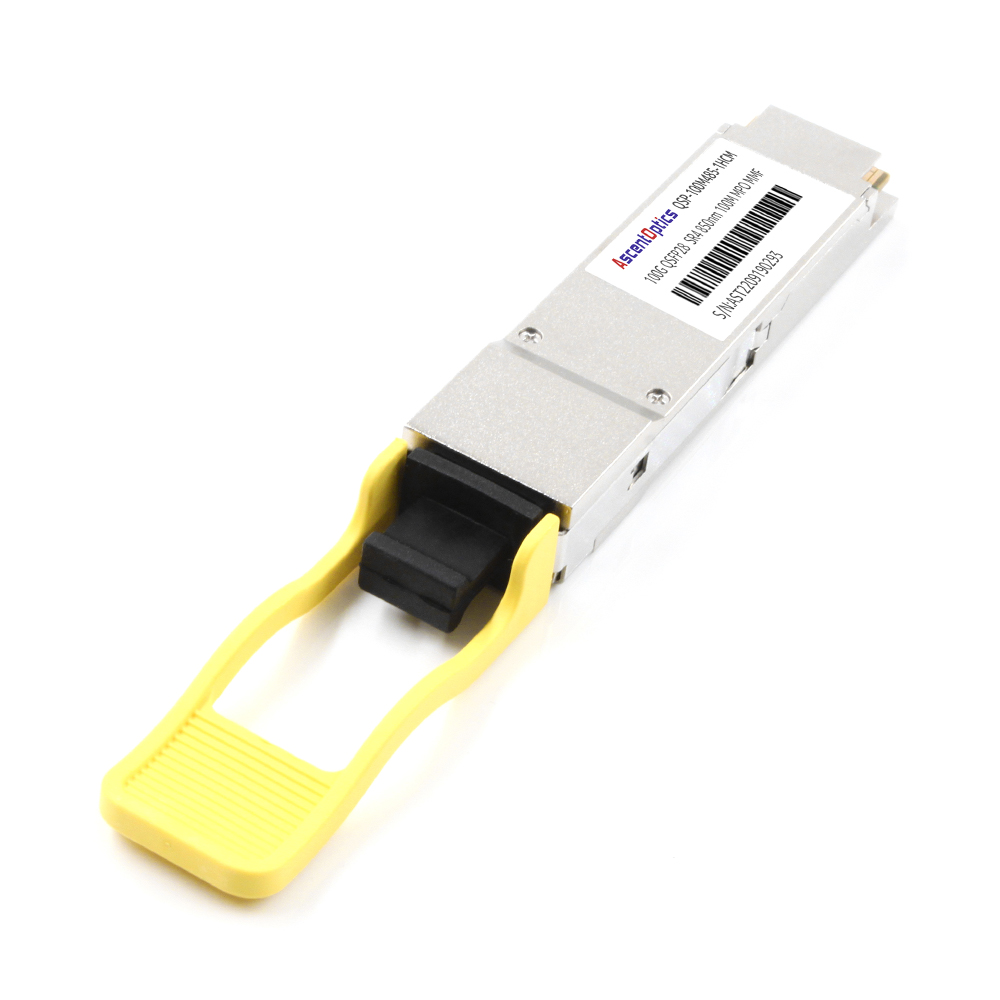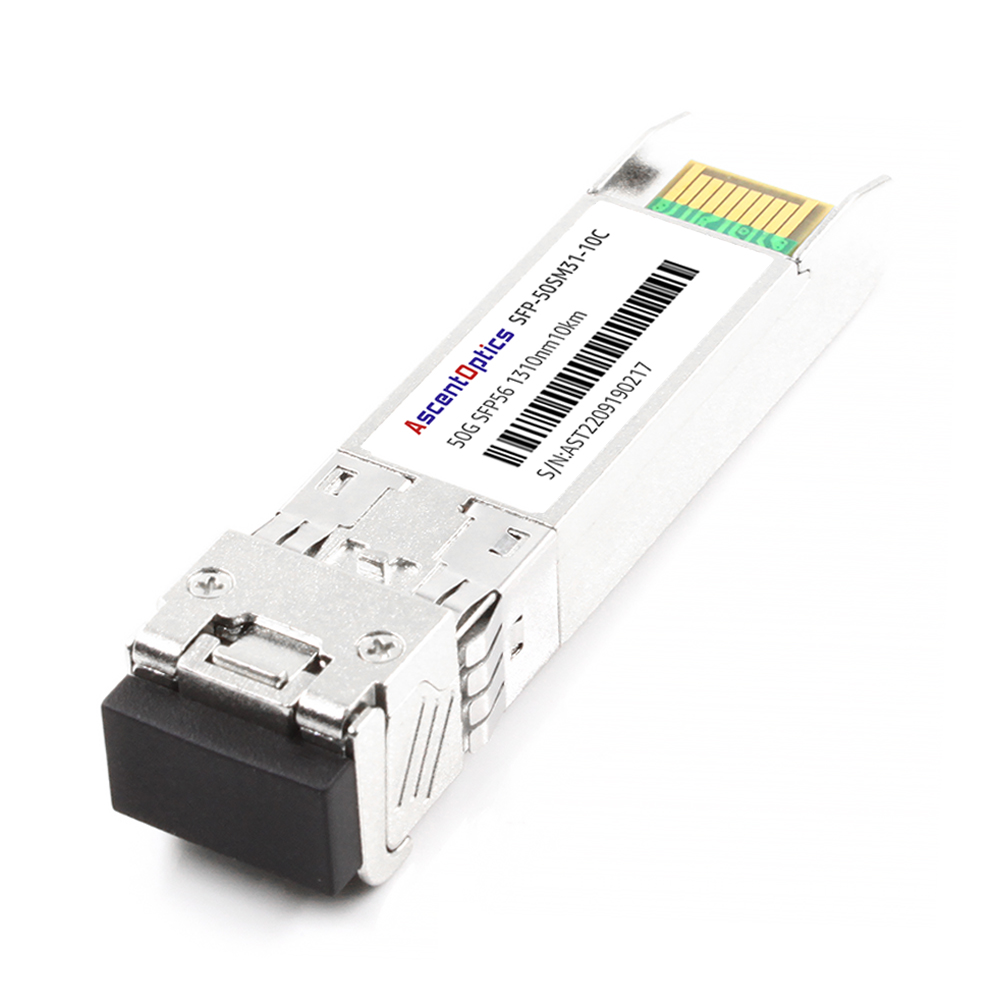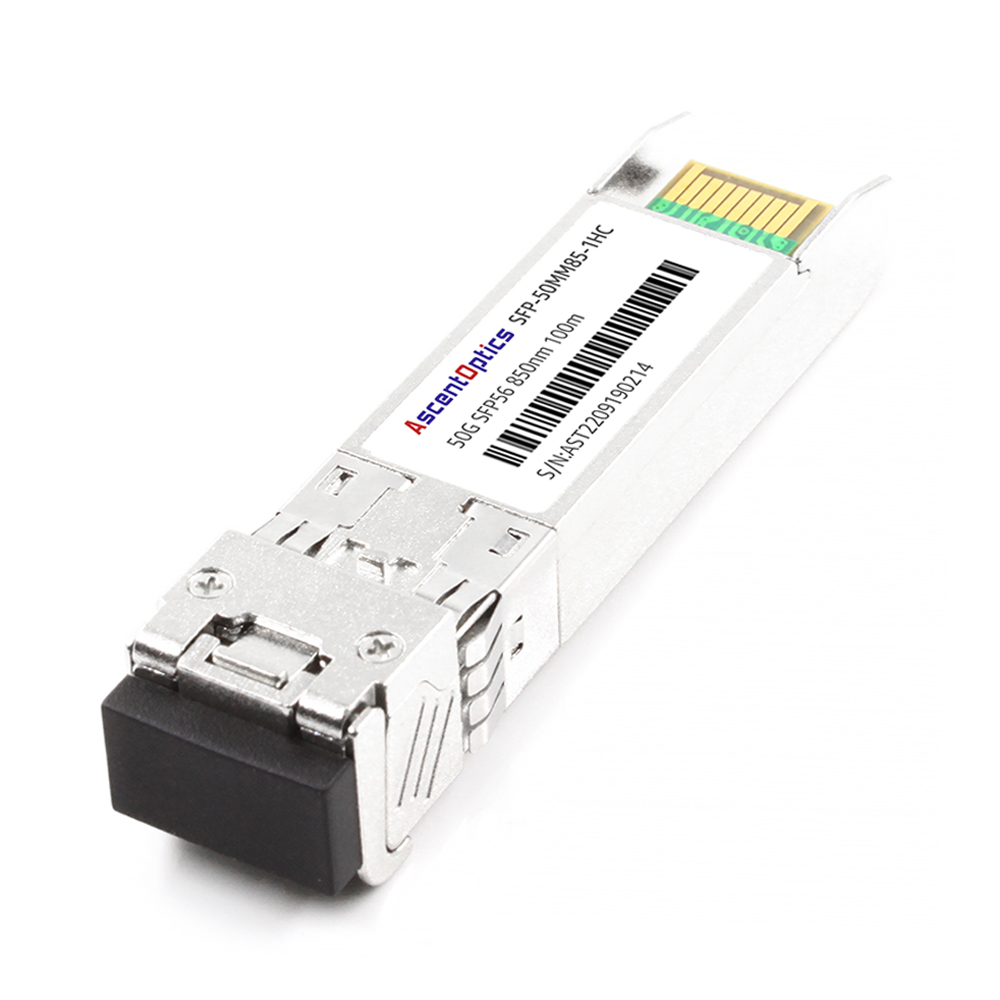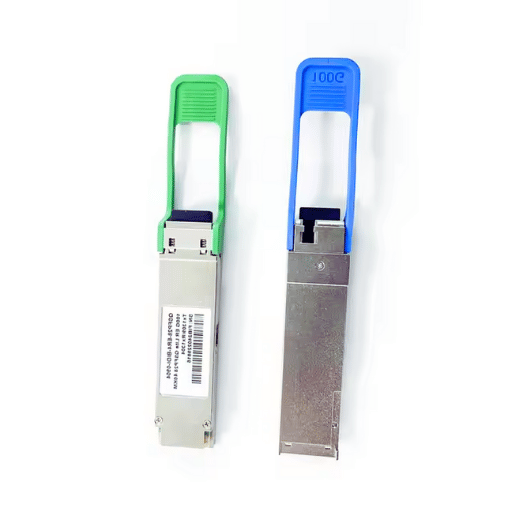The fiber optic modules are of utmost importance in today’s data communication systems as they make long distance transmission of data at high rates possible with lower levels of attenuation. QSFP28 and SFP56 are probably the most widely known transceiver modules among the several that proliferate the market since they fill different networking and performance needs. These two technologies will be analyzed in detail comparing their specifications, functionalities as well as usual applications. With this knowledge of what distinguishes a QSFP28 from an SFP56, enterprises and network specialists could better select suitable modules for their infrastructure.

The QSFP28 is an optical module with a 100 Gbit/s Ethernet capability alongside four channels each with data transfer rates of up to 25 Gbit/s. This type of module is commonly utilized across high-speed networking scenarios with a strong focus on the high-density design as well as Ethernet, InfiniBand and Fibre Channel support making it an ideal candidate to use in data centers.
SFP56 or Small Form-Factor Pluggable 56 can be labelled as an updated variant of an SFP module as it supports a data rate of 50 Gbps thanks to partying techniques known as PAM4 modulation. SFP56 has proven itself in areas where single-lane data transfers are needed at compact space, such as 5G networks alongside infrastructure for the next generation.
With an SFP56 module bandwidth per lane is increased and a QSFP28 is better suited for environments with a focus on a widening the number of lanes supported. The type of module that should be utilized gram a SFP56 or a QSFP28 should be based off the needs of the network in terms of density, upgradability and data transfer rates.
The Basic Structure of QSFP28 can accommodate up to 4 gigabit interfaces while retaining a compact structure. The QSFP28 is a compact form factor enabling connectivity through 8 parallel fibers of 10GBS on Ethernet networks.The following are some of the significant properties and metrics linked to QSFP28 modules that have been previously stated:
Data Rate: The device PPEM supports a data rate of 100Gbps (4 x 25 Gbps lanes), which enables efficient high performance operation of the network. A few varieties can handle 400 Gbps at most.
Reach:
Applications:
Apart from data centers, enterprise networks and hi-performance computing setups, the technology has been availed in a myriad of applications.
Shifting focus, this technology is vastly used in Ethernet technology, InfiniBand, OTN (Optical Transport Network)
Such environments benefit from QSFP28 transceivers due to their high port density and scalability features. There performance and compatibility Multimode and Single mode fibers allows widely deployed in varying environments.

The SFP56 transceiver module can be used for low-latency, high bandwidth applications. Listed below are its specifications:
Schematic Details:
Transmission Distance:
Characteristics:
Advanced encoding ensures better signal integrity.
SFP57 transceiver module is backward compatible with older SFP ports when appropriate.
Less than 3.5 W typical, low-power consumption.
Intended for use in Ethernet networks (50GBASE-SR, 50GBASE-LR)
Applications:
Data centers and cloud computing clusters which require higher speeds
Enterprise networks where bandwidth can be adjusted according to gaps.
5G wireless networks backhaul and fronthaul transmission.
Storage area networks (SANs) built for parallel node computing.
Telcos and metro interconnections.
With the help of SFP56 transceiver modules, modern communication networks that require high speeds while ensuring reliability and efficiency can be built.
The SFP and QSFP modules are transceivers meant for high-speed data links. Nonetheless, they occupy different segments and are not anywhere similar in terms of their features.
1. Port Density and Form Factor:
QSFP modules include four parallel channels integrated into a single transmission device. As such, they have a higher port density and can facilitate data transmission between 40 Gbps to 400 Gbps. This is in comparison to SFP modules that aid with a single port and range from 1 Gbps to 56 Gbps.
2. Data Transmission Rates:
The range of data speed supported by SFP modules is significantly lower than that of QSFP modules. The latter is more suited for high latency tasks while the former is appropriate for point-to-point low latency tasks.
3. Applications and Use Cases:
As previously alluded to, the lack of high data speed makes SFP modules inappropriate for large data centers. Conversely large scale data centers often utilize QSFP modules as they aid in high speed data transfer.
4. Power Consumption and Heat Dissipation:
As expected, lower speed results in lower power consumption when utilizing SFP modules. Once again, the wide range of data speed for QFSF modules means the power consumption can vary substantially based on the connection channels. A high power range results in increased heat dispersion.
The difference in the performance capabilities and the architecture enables SFP and QSFP modules to be viable options when tailored for specific infrastructures. All in all both SFP and QSFP are essential for contemporary networking.
American Psychological Association (APA) style format is authored by the American Psychological Association and used mostly by writers and other social science scholars and researchers. Within the social science context, it has been a standard format that is used to write either individual research papers and dissertations or articles for publication in academic journals , IEE and others. The creators of this format aim at improving the ease of accessing sources in an article and for this very reason structuring the text is indispensable.

Constructed to provide 25Gbps data rate, SFP28 modules work perfectly in contemporary data centers unlike their older versions as they have reasonably higher bandwidth with an SFP+ shaped form. They display great modular consumption that goes about 1 watt and above for each module, this is ideal as it showcases better thermal management as well as reduces costs incurred during their operations. This also means that updating from 10G networks to more contemporary versions require little to no hassle as SFP28 modules are compatible with older hardware. SFP28 modules are extremely reliable and effective as they possess sufficient performance levels along with a very low latency making them perfect for cloud services, virtualization and even transmission of large volumes of data. If needing a reliable module for new network designs SFP28 can be relied on as it is cost effective and efficient.
An increased efficiency in regards to bandwidth transmission and even the distance can be achieved due to the advancement in design when it comes to performance in optics. The addition of supporting a data rate of around 25Gbps along with a 10km distance makes SFP28 ideal as it can cater to numerous enterprises and data center targeted applications. While being upgraded from older fiber systems to SFP28 an extended fiber system is not required which results in better performance.
The term SFP port density denotes the number of SFP ports that can be installed on a specific network switch or device. Enhanced port density accommodates higher scalability through more connections in the same physical area. This is quite useful in data centers and in the business world where the need for high connectivity without excessive space is required. The __ use of devices with high SFP port density guarantees that the infrastructure is used wisely resulting in simplified network expansions.

Optical modules known as QSFP28 are particularly beneficial in forming high-speed ethernet interlinks, thus relevant for 100 G Ethernet networks. A single QSFP28 module is said to have four electrical lanes, each running at 25 Gbps, which is a total of 100 Gbps for the data link. Given below are the functional properties and technical data of the devices in question in detail:
Data Rate: A single QSFP28 module operates at a standard of 100 Gbps with the help of 4×25 Gbps channels. In some cases, the modules can be configured for breakout’s such as 4×25 Gbps or 2×50 Gbps connections.
Transmission Distance: The modules are designed for a varying range of transmission distances
For short-range applications, QSFP28 SR4 are recommended, they are capable of enabling distances within one hundred meters for OM4 multi-mode fiber.
For Long-range Applications diagnostic QSFP28 LR4 which is a single-mode fiber enables distances of ten kilometers, a diagnostic with enhanced range could aid in communications over distances of up to 40 kilometers.
Wavelength and Mux/Demux:
Long range diagnostics which include the LR4 and ER4 types communicate over up to four different wavelengths, the wavelengths fall between the range of 1295 nm and 1310 nm.
The incorporation of multiplexers and demultiplexers into single module makes heterogeneous wavelengths in a single pair of HFC able to be easily manage.
Interface Compatibility: Compatibility with LC or MTP/MPO which are junctions used in the network is offered by QSFP28 modules.
Power Consumption: The use of dense networks should be power efficient, which means that most of the QSFP28 modules tend to use less than 3.5W for a single unit which reduces heat loss and guarantees optimal performance even under high-density environments.
Applications:
Generally, in the data centers, QSFP28 optical modules are deployed throughout the spine-leaf topologies.
They also provide high bandwidth connections between enterprise switches, routers and servers.
Due to their high data rates, acceptable performance and flexibility, QSFP28 modules are a step towards effective infrastructures for networking. Properly selected and deployed, these modules provide for scalability, efficiency and future adaptability of the connectivity.
The following are the essential components that need to be monitored and noted when choosing a transceiver module:
Network Device Compatibility: Before purchasing a transceiver, ensure it is suitable for the network device as well as the ports available, for example SFP or QSFP28.
Transmission Distance: Make your selection for whether or not the reach is required for long distance or short distance, for example within a certain data center.
Data Rate: You also need to understand what level of bandwidth transceiver you require whether it’s 10Gbps or 100Gbps while ensuring there’s no lack in delivery.
Fiber Type: When dealing with connections needing MMF keep them in short distances since the costs of connection would skyrockete if elongated, the same goes for SMF with distance shifts for connections over short distances.
Standards Compliance: Ratify if compliance was done with certain required industry standards such as MSA or IEEE to ensure dependability and compatibility.
Meeting those compulsory steps allows you to enhance your network performance in terms of reliability and efficiency ensuring performance scale.
A: Fiber optic modules QSFP28 and SFP56 differ primarily in terms of supporting form factor, data rates and defined applications. The small form factor pluggable 28 or QSFP28 is used in Data transmission for Networking at a high capacity, this item is capable of 100g transceiver operations. While for Sfp56, this module in enhancement is well suited for 50g transceiver operations and equipped with a more compact physical form suited for less stringent usage.
A: We must first understand the differences that ought to be evident the moment the comparison of QSFP28 vs QSFP-DDS is made. In simple terms, it Is evident that :QSFP-DD supports higher data rates and is capable of 400/500g transceiver operations. This unit’s application is in next generation data centers which require higher bandwidth while QSFP28 is commonly optimised for 100g applications.
A: It is worth noting that the sPFP28 and the QsFP28 transceivers are not interchangeable because GFPs are designed to operate at the 100G level only. In comparison, SFP28 Modules are suitable for 25g purposes because they are polybreadable. They perform different network functions and so cannot be replaced with each other directly.
A: To understand how a QSFP-DD compares to a QSFP56, one should take into account the data transmission capabilities and the associated network. The maximum data rate for QSFP-DD is 400G which is acceptable for large data centers. QSFP56 is limited to 200G and is typically utilized in cases where power and size optimization is necessary. Consideration of any already existing infrastructure cannot be understated either.
A: There is a difference between the two types ranging mostly in terms of their construction and their purpose of use and this ‘Thank You’ Hotel & Guest House: Qualifying Service Facilities Upgrading includes OSFP for base 400G interoperability and QSFP28 supporting compact designs for 100G OSFP on the. OSFP in contrast is bigger and is ideal for power and bandwidth enhancements.
A: The price of the QSRP28 varies because of the modules specs as well as the brand and seller depending on the model over all the QSPF28 is a more expensive model in comparison to the SFP28. They provide a greater data rate than the SFP28 which is why they are more costly. However, in comparison to the other ODSP modules they are cheap which offer higher bandwidth expansion options.
A: One of the accessory requirements of internal devices that feature a QSFP transceiver in their design to convert modules made in the form factor osfp or sfp28 are qsfp28 adapters or abbassadors. Depending on the device’s specifications, additional components, such as adapters or converters, may be needed to support SFP28 or OSFP modules. Always consult specifications that accompany the device and ensure that interoperability is possible.
A: Transceivers that are in the configuration of a QSFP-DD are becoming popular in the srateges that involve creating performance optimized data–center networks that stem bandwidth requirements – for instance networks deployed for cloud and large scaled enterprises. Since they allow up to 400G connectivity, they assist in ensuring the integrity of the network connections as data requirements continue to grow.
A: The distinctions between SFP28 and QSFP28 affect network architecture as they specify how large or fast connections can be. SFP28 is meant for 25G types connections that are often found in small networks or in larger networks in performing specific tasks. Meanwhile, the network infrastructure supporting large scale networks built on backbone architecture that requires high aggregation and transfer rates employ the use of QSFP28 which sustains transferring speeds of up to 100G.